 |
 |
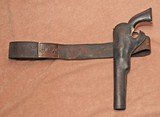 |
 |
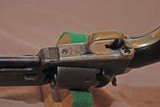 |
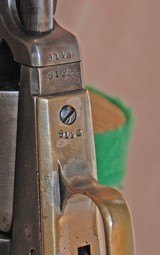 |
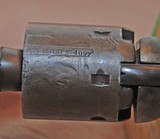 |
 |
 |
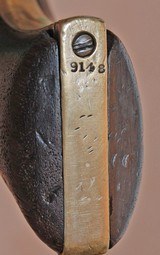 |
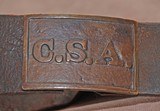 |
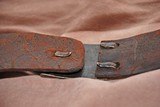 |
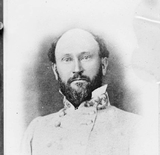 |
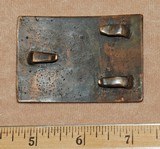 |
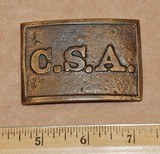 |

Colt 1851 Navy Revolver Inscribed to General James G. Martin, Confederate Civil War General, with holster, belt and Confederate Buckle
Guns International #: 102293935 Seller's Inventory #:
Category: Colt Pistols - Antique - Civil War Revolvers
Seller's Information
When emailing or calling sellers direct, please mention that you saw their listing on GunsInternational.com
Seller: dacotah
Member Since: 5/20/14
First Name: Keith
Last Name: Kristjanson
State: North Dakota
Zip: 58201-7916
Country: United States
Phone: (701) 740-7438
Number of Active Listings: 8
Total Number of Listings: 9
Seller: Private Seller
Return Policy: 3 day inspection and return policy on used guns.
No refunds for shipping charges. Returned items must be received in the same condition as originally shipped - cleaning, disassembly, alteration, or damage of any kind will void inspection privileges.
Payment Types Accepted: USPS MONEY ORDER, CERTIFIED FUNDS, CREDIT CARDS WITH 3% FEE DISCOVER/ VISA/MASTERCARD/AMERICIAN EXPRESS
Description:
Colt 1851 Navy Revolver Inscribed to General James G. Martin, Confederate Civil War General, with holster, belt and Confederate Buckle
Close-ups of Confederate Buckle (front and back) added
Please see the end of description text to see notes describing the condition of the revolover and the holster, belt and buckle.
Martin, James Green
by Paul Branch, 1991
14 Feb. 1819–4 Oct. 1878
James Green Martin, Confederate officer and lawyer, was born at Elizabeth City, the oldest son of William and Sophia Scott Daugé Martin. His father, a prominent planter and shipbuilder, had served in the North Carolina General Assembly. Martin himself was named after his grandfather, James Green Martin, a Methodist minister of Norfolk, Va. His mother was the daughter of General Peter Daugé of Camden County. Young Martin received his early education at St. Mary's in Raleigh and then at a boys' school. Entering the U.S. Military Academy at West Point in 1836, he was graduated in 1840 fourteenth in his class, ranking behind two other prominent Civil War officers: Richard S. Ewell and George H. Thomas.
Commissioned as second lieutenant of artillery in the U.S. Army, Martin served on the northern coast, chiefly in Maine, and participated in the coast survey. While in New England, he met and married Marian Murray Read, the great-granddaughter of George Read, a signer of the Declaration of Independence for the state of Delaware. Two years later, in 1846, Martin served with distinction in the War with Mexico as a battery commander, participating in the fighting around Monterey and Vera Cruz. His leadership abilities quickly earned him promotions on 16 Feb. 1847 to first lieutenant and on 5 August to captain. In the advance of the American army on Mexico City, Captain Martin participated in the battles of Cerro Gordo, Contreras, and bloody Churubusco. In the latter engagement his right arm was shattered by grapeshot and had to be amputated. On 20 August, for his gallantry and meritorious conduct, he was brevetted with the rank of major.
After recovering from his wound, he saw action at Fort Monroe, Va., at Schuylkill Arsenal, Pa., and on the midwestern frontier at Nebraska City. At the latter place his wife died, leaving him with their four young children, but Martin was fortunate enough to meet Hetty King, the daughter of Charles King, president of Columbia College. They were married in 1858. Afterwards Martin accompanied Albert Sidney Johnston as quartermaster on Johnston's Utah expedition of that year. His last service in the "Old Army" was at Fort Riley, Kans., on staff duty. Image of James Green Martin, from the Museum of History, published 1864 by the Museum of History. Presented on North Carolina Department of Cultural Resources.
On the outbreak of the Civil War and the secession of North Carolina from the Union, Martin resigned his commission (14 June 1861) and hurried to Raleigh to offer his services to the state. Initially, he received a commission as captain of cavalry in the Confederate Provisional Army. On 20 Sept. 1861 he was appointed adjutant general of North Carolina Troops, a force of ten regiments being raised to serve for three years or the duration of the war. In this capacity Martin was responsible for organizing, training, and equipping the ten state regiments, a task for which his natural energy and previous military training were well suited. Eight days later, when state Adjutant General John F. Hoke resigned to take command of an infantry regiment, Martin was appointed as his successor with the rank of major general of militia. This post gave him command of all of the state's military forces and defenses, subject to the orders of the governor, and charged him with organizing, arming, training, feeding, and clothing the troops as well as overseeing the defense of North Carolina, particularly the vulnerable coastal sections.
Martin tackled this enormous responsibility with his characteristic energy; in fact, it was for his accomplishments in this role that he received his greatest recognition. Through his efforts, volunteers were raised, regimented, armed, and trained. By January 1862 Martin had forty-one regiments ready for Confederate service, representing about 12,000 men above the quota that had been established for the state. At his suggestion militia laws were revised and updated, and the state purchased a number of fast, sleek steam vessels to act as blockade-runners for the purpose of bringing supplies and war material from Europe. The scarcity of quartermaster stores was met by sending purchasing agents throughout the new Confederacy to procure them for the state. Martin also contracted with individuals and firms to manufacture arms and ammunition in various towns and cities in North Carolina.
To enable his newly organized regiments to meet that first winter of 1861–62, Martin established or contracted with cloth factories to manufacture uniforms, blankets, and other articles. In addition, purchasing agents bought spare cloth and articles of clothing from the general populace and went to other Confederate states to buy cloth. It is to Martin's credit that the state's soldiers on the whole endured the winter comfortably and that North Carolina was the only Confederate state to clothe its own troops in the field. Only in the area of coastal defense did his energy and skill fail to make a significant impression. Here, through no fault of his own, sufficient heavy cannon and naval forces were simply not available in time to stop the overwhelming onslaught of the Burnside expedition.
After establishing the state's offensive and defensive capabilities at an operational level, Martin applied for a field command. This he received with his appointment as brigadier general in the Confederate army on 17 May 1862, to rank from 15 May. On 2 June he was assigned to command the District of North Carolina, with headquarters at Kinston. However, on the night of 30 June General Robert E. Lee ordered Martin to move at once to Virginia to reinforce Lee's Army of Northern Virginia, then engaged in the fierce Seven Days' Battle around Richmond with General George B. McClellan's Union army. Leading a brigade of North Carolina regiments then under his command, Martin arrived too late to participate in the fighting and was ordered back to North Carolina. There he assumed the double duty of adjutant general and commander of all the state's forces. For reasons not disclosed in the records, he resigned his commission on 25 July but was reappointed to brigadier general on 11 August (confirmed 30 September). On 18 August he was formally assigned to command the District of North Carolina, comprising all the territory from the Roanoke River to the South Carolina line. He continued in this capacity until the fall of 1863, when he was instructed to organize a brigade of troops from the regiments under his command.
Martin formed a brigade consisting of the Seventeenth, Forty-second, Fiftieth, and Sixty-sixth North Carolina regiments and encamped at Wilmington. The brigadier general was a strict disciplinarian, a quality that was usually unpopular with the rank and file, but he made these regiments a well-drilled and efficient military unit. In February 1864 he led his brigade up the coast to attack Morehead City and Fort Macon as a diversionary operation while Confederate General George Pickett attacked New Bern. Martin had pushed his way as far as Newport when he received word that Pickett's attack had failed, whereupon he returned to Wilmington. On the opening of the spring offensive of the Union forces in Virginia in May 1864, Martin's brigade was ordered to reinforce the defenses of Richmond. Arriving on 14 May, his brigade took part in the "bottling" of General B. F. Butler's Union army in the Battle of Drewry's Bluff two days later and on 20 May, as a part of D. H. Hill's division, participated in an attack resulting in the capture of part of Butler's advanced entrenchments near Howlett's House. Martin's conspicuous role in this attack won him the admiration and enthusiasm of his men, who hoisted him on their shoulders and jubilantly carried him about, shouting "Three cheers for Old One Wing!" Afterwards Old One Wing became his nickname to the troops, coined because of the loss of his right arm in Mexico, and they regarded him with warm affection.
His brigade became a part of Major General Robert F. Hoke's division and joined Lee's army in its desperate struggle against Ulysses S. Grant's Union army outside Richmond. In the battles around Cold Harbor on 1–3 June, the division occupied a critical sector on the right center of Lee's battle line, which was held against Grant's famous grand attack on the morning of the third. Afterwards Hoke's division was shifted to Petersburg and enabled General P. G. T. Beauregard's thin Confederate line to hold out against Grant's attacks on the city until the rest of Lee's army arrived to protect it. Martin's brigade played a prominent role here and in Grant's subsequent siege around Petersburg. During this engagement, Martin's health failed due to the constant strain and exposure in the stagnant trench lines. This compelled him to relinquish his field command and accept a quieter assignment as commander of the District of Western North Carolina, with headquarters in Asheville, where he remained until the end of the war. His last service for the Confederacy was to resist George Stoneman's Union cavalry raid through western North Carolina. Some of the forces under Martin's command were among the last Confederate units to surrender, and he himself was paroled at Asheville on 3 May 1865.
Martin's war record had been brilliant and untarnished. He had won the respect and admiration of his men and superiors alike—among them General Robert E. Lee, who said: "General Martin is one to whom North Carolina owes a debt she can never repay." After the war, dispossessed of much of his former holdings, Martin took up the study of law and practiced successfully in Asheville from 1866 until his death twelve years later. He also devoted some of his time to the Episcopal church as a layman and a delegate to the diocesan and general conventions. He was buried in Asheville.
James Green Martin
Born: February 14, 1819
Birthplace: Elizabeth City, North Carolina
Education:
1840: Graduated from West Point Military Academy (14th? in class)
Occupation before War:
1840 – 1847: 2nd? Lt. United States Army, 1st Artillery
1847 – 1853: 1st Lt. United States Army, 1st Artillery
1847 – 1861: Captain United States Army, Assistant Quartermaster
1847: Wounded in the right arm at Battle of Churchbusco, Mexico
1847: Brevetted Major for Gallantry in two battles of Mexican War
1848 – 1855: Quartermaster Duty at Fort Monroe, Virginia
1857 – 1858: Quartermaster Duty at Schuylkill Arsenal
1858 – 1859: Quartermaster Duty at Nebraska City
1859 – 1861: Quartermaster Duty at Fort Riley, Kansas
1861: Resigned from United States Army on June 14th
Civil War Career:
1861: Captain of Confederate Army, Cavalry
1861: North Carolina State Adjutant General
1861: Commander in Chief of North Carolina State Forces
1861: Major General of North Carolina State Militia
1862 – 1865: Brigadier General of Confederate Provisional Army
1862: Commander of the Department of North Carolina
1864: Participated in the Battle of New Bern, North Carolina
1864: Participated in Petersburg and Richmond Campaign
1864 – 1865: Commander Army of Western North Carolina
1865: Surrendered at Waynesville, North Carolina
Occupation after War:
1865 – 1878: Attorney in Asheville, North Carolina
Died: October 4, 1878
Place of Death: Asheville, North Carolina
Cause of Death: Not Known
Age at time of Death: 59 years old
Burial Place: Riverside Cemetery, Asheville, North Carolina
This is an early Colt Third Model 1851 Navy Revolver SN 9148, it is an early issue SN. Please note it has a mismatched Cylinder #4097 (which is not unusual in war settings, commonly referred to as a campfire switch).
This pistol was likely General Martin's US Army issue. The General resigned from the US Army in 1861 and volunteered his services to his native state of North Carolina. The backstrap would have been inscribed in 1861 when he was appointed Major General of the North Carolina Militia (NCM).
Regarding condition:
Barrel & rammer have not been refinished/repolished and barrel address is crisp, but has had some cold blue touchup. The rammer latch (the latch spring is intact and works as intended) is mechanically sound and works smoothly.
The cylinder MM #4097, readily discernible faint cylinder scene with numerous dents and dings, with some old cold blue touchup.
The frame has been overly cleaned(evidenced by light scratches of steel wool) and cold blue applied. No material removed, but scratches of steel wool are evident. But "Colt Patent" stamp remains crisp.
The brass trigger guard retains approximately 25% of its original silver plate.
The Brass backstrap retains approx. 10% of the original silver plate, visual evidence of overcleaning the bottom of the backstrap.
The backstrap grip face itself has not been cleaned and has the great patina of uncleaned brass takes on with age. It has numerous random light dents, dings and abrasions you would expect to see on an old inscription. The inscription remains crisp and clear.
The revolver mechanically functions very well. It cocks to half-cock and full-cock and holds each position. The cylinder indexes properly when cocked and the trigger is set at full cock, The trigger, after being set, holds until the trigger is pulled. The revolver functions as designed and intended.
The backstrap channel in the grips has a different serial number written in it than the SN of the revolver. So, the grips are not original to the revolver. The grips are old and of the period of use, but are refinished. The wood grips retain an overall pleasing old full exterior refinish.
The overall look/appearance of the revolver is pleasing to the eye.
The leather holster and belt are old and of the period. They are fully intact, but have the age crazing you would expect of 150+ year old used leather to have. The holster is left handed (the General lost his right arm in the Mexican War). The leather belt is wider than the belt buckle and was period modified to adapt to the buckle. The original period brass Confederate belt buckle remains uncleaned and is a very fine example of a CS buckle.
There is no written provenance with this revolver rig. That is the norm, not the exception for most historical revolvers (particularly Civil War revolvers). If I did have legitimate written provenance, it would be worth multiples of what I am asking for it. The question any prospective buyer has answer for himself is, is the inscription old and of the period. I concluded it was. The inscription has had black ink or black magic marker added to the engraved letters to enhance the look. This is the second time I have owned this revolver over the years and originally the embellishment (black ink or marker) was not there.
I somewhat facetiously say that this revolver has self attesting provenance. The inscription itself!
Price: $22,500.00
Antique: Yes